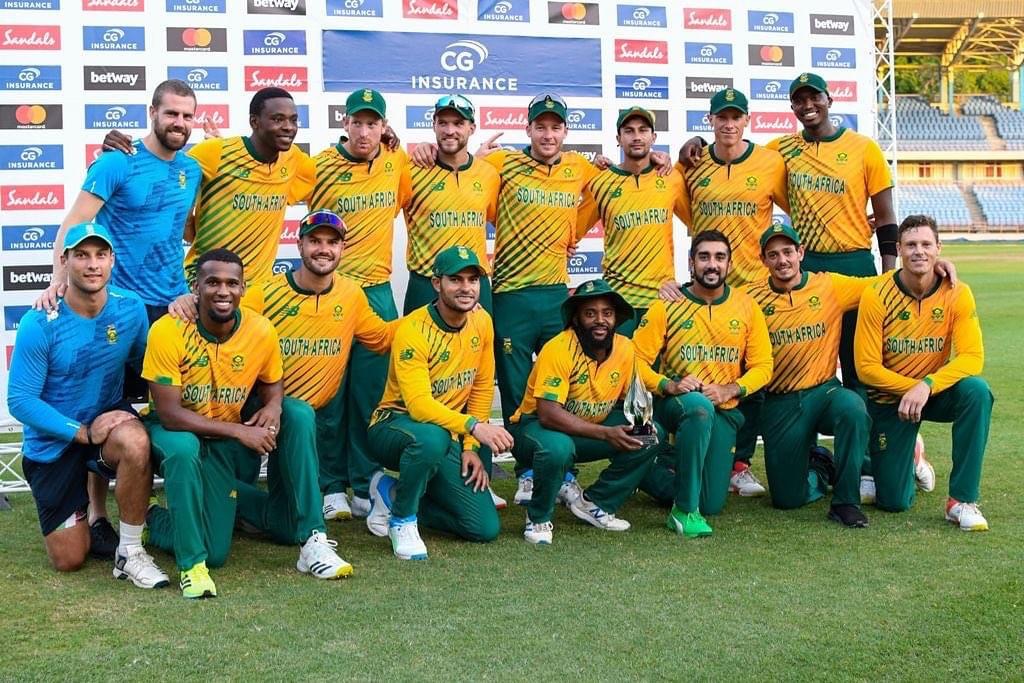
Table of Contents
EDITOR'S NOTE
The Step Up to Test Cricket
Khalid Mohidin
Founder and Editor - Cricket Fanatics Magazine
Test cricket is not for the faint-hearted. It demands increased mental toughness, improved endurance levels and a peak physical condition.
With each game lasting a maximum of 5 days, preparation is crucial to survival because this format is the ultimate test of the mind, body and soul.
The best way to prepare for this format is to be out there in the middle, but only 11 players can gain that experience at a time. For players who do not form part of the national setup, the best way to prepare for Test cricket is to play 4-Day cricket.
The new domestic system will see 15 teams play 4-Day cricket. As a result, the massive decrease in professional contracts will see fewer players gain experience from game time.
Before, there was 3-Day cricket for semi-pro cricketers, but that has now fallen away. Rumour has it that an U23 Colts League will be created, giving more opportunities for South African cricketers to gain red-ball experience. For now, that has not been 100% confirmed and there is a lack of red-ball exposure for school kids. For our U19 players, the emphasis is on white-ball cricket.
It is now more vital than ever that red-ball cricket is preserved in the country. If clubs don't play 2-Day cricket, then the talent pool of players who can go on to become Test players will inevitably shrink. The importance of club cricket is higher than ever.
In this issue, we focus on Test cricket and red-ball cricket. We gain insights from players and coaches who currently play at the highest level, coach at all levels and former players of the longest format.
We aim to prepare the next generation for the battles they will face as they progress in the system as well as how they can get a head start in gaining experience in the red-ball game.
So sit back, grab a beverage and a snack, and enjoy issue 13 of Cricket Fanatics Magazine.

BECOME A PATRON
By Khalid Mohidin
A very special announcement that I believe will change the face of the way cricket is supported in South Africa.
Hey, guys! Welcome to Cricket Fanatics Magazine. I would like to welcome you to the first and only fan-driven Cricket publication in South Africa.
I started this venture on 1 July 2019 with a vision to get fans from all walks of life engaged with the game and the personalities in cricket.
We want to tell the untold stories of South African cricket and we want fans to be heard.
Since we started, we covered the Mzansi Super League, Women’s Super League, Proteas Men and Women International Test, ODI and T20I series, as well as school and club cricket, with the aim of providing entertaining, engaging and educational content.
But hasn’t stopped there.
We started a Monthly Magazine where we provide multi-media content, including exclusive features, opinion pieces and analysis.
This works hand-in-hand with our YouTube channel where we produce unique cricket shows that allow fans to call in and have their say.
We have the Daily Show, which reveals all the major talking points in South African cricket.The Sunday Podcast Show where we sit back, relax and engage with the live chat, answering all the questions fans have about us and the game.
We have Off-Side Maidens, the first ever All-Women’s Cricket Show on YouTube, which helps empower women in cricket and gives them a place to share their own views on not only women’s cricket but all cricket.
We have a Legends show, where we interview all legends in cricket.
To produce all of this, we’ve invested a lot of money, time and effort to bring this to you for free.
But to keep this going we need your help. So we have opened a Patreon account.
Today, we are fortunate that technology has enabled anyone to become a patron of creative work, even if they are not a billionaire.
We have therefore launched a campaign for you as a Cricket Fan to become a patron and support us as an independent, bootstrapped publisher.
As a Patron, you also get your voice heard as a Fan.
Plus: You have the opportunity to become more engaged with the content we produce.
Every month we produce at least:
- 60 Website Articles
- 20 Daily Video Shows
- 4 Weekly Podcasts
- Match Previews
- Match Reviews
- Video Interviews
- And more…
So please join our Patreon today.
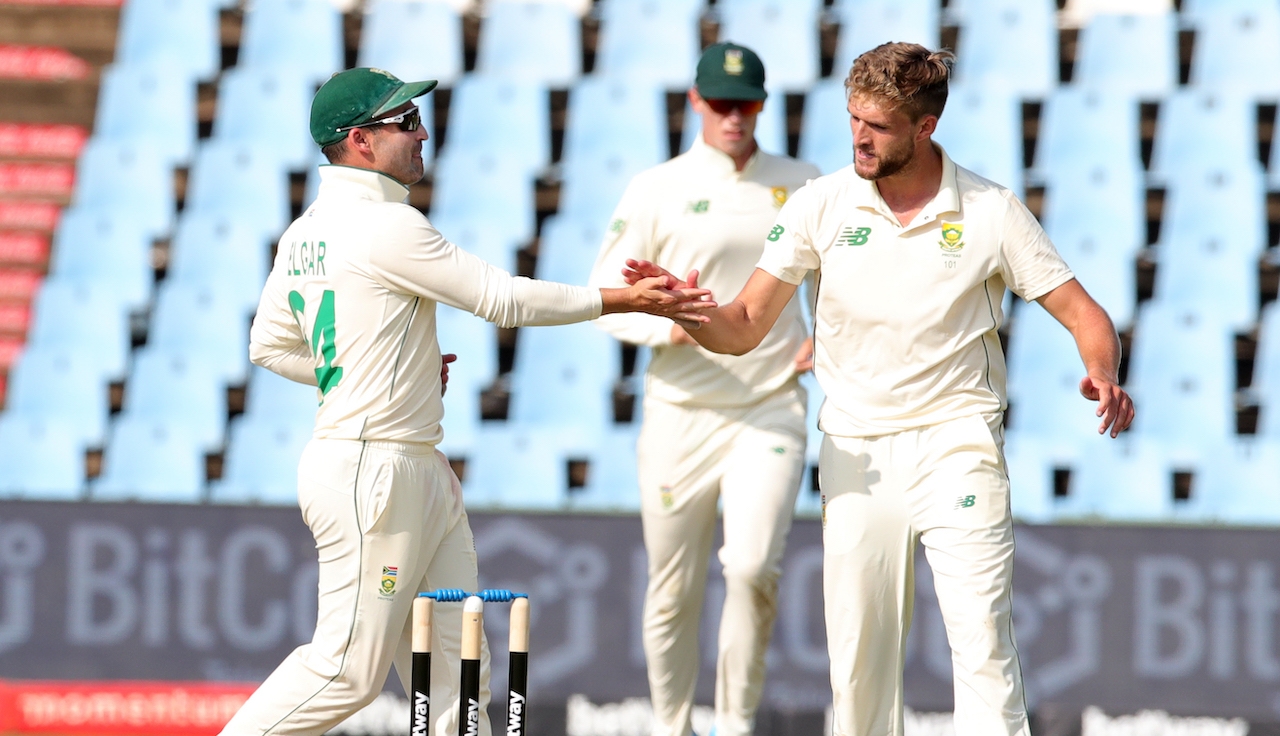
The "Scientist" That Can Be The Answer To SA Cricket
By Obakeng Meletse
History was made on the 28th of August 2012 when South Africa became the first team to top all three formats of the game. While ICC silverware remained absent - the collection of trophies accumulated during the team’s dominance over bilateral opposition was cause for some - albeit muted- celebration by the team and the public.
The Test side was formidable. They were the team to beat between 2007 and 2014 and the Test mace was the closest thing the team had to a world title. In comparison to the limited-overs teams they have been more consistent in the longer format and the launch of the ICC Test Championship might just be the best chance to break the duck.
The first edition of the ICC World Test Championship recently concluded and New Zealand was crowned champions after defeating India by 8 wickets. The victory was fitting and this time New Zealand managed to clear the final hurdle which had caused a late stumble so many times before.
The biggest winner on the day however was Test cricket and its survival moving forward.
The popularity of Test cricket has always been threatened to varying degrees by the limited overs forms of the game. Whether it be the 50-over format or, in recent years, the advent of T20 cricket - the unique selling points of the shorter formats have proven popular among fans and players alike.
Fans tend to gravitate towards T20 cricket because of its fast-paced nature and power-hitting while players enjoy the allure of the potential financial gain. In the case of 50-over cricket meanwhile, the promise of a result by day’s end is among its greatest appeals.
The launch of the WTC came at the right time as it is key to the growth and survival of the game and giving all the Test-playing nations another chance at winning a world title.
The Proteas were in a period of transition and found themselves outside of the top 5 for most of the campaign. Their all-round game left a lot to be desired and the relatively young team had it all to do.
With a new captain came a new era and a new generation while the loss of experienced players to retirement meant an opportunity for new talent.
It hasn’t been easy for youngsters to step up to Test cricket during the Boucher era, but there has been enough to get excited about when observing Wiaan Mulder's rise.
Cricket Fanatics Magazine caught up with the all-rounder who is now considered by many to be the leading all-rounder in the Test team.
“It’s quite a surprise that I’m seen as the number one all-rounder [by the fans]. I feel like in Test cricket I haven’t stamped my authority. I’ve bowled well especially when the team needed it most and I’m happy about that but I don’t think I’ve delivered with the bat yet. I’ve got in nicely and faced a lot of balls. In Test cricket, you don’t get a lot of balls to score off, but I have improved a lot since my debut.’’

Finding the Balance
Post readmission South Africa more than other Test-playing nations have been blessed with arguably the best all-rounder to have ever played the game in Jacques Kallis. The balance that he had with bat and ball separated him from most all-rounders.
Viewed more as a batsman than a bowler, Kallis still had 292 Test wickets at the end of his career. Consistency and balance were key to his success.
‘’I still think I’m a batting all-rounder," said Mulder. "I don’t think I’ve got something special like Shaun Pollock and Vernon Philander who were incredible bowlers and they had a little bit more skill and had more responsibility with the ball.
"My responsibility with the ball is very simple at this stage and it’s to dry up runs and keep it simple by bowling to simple fields and if I get a wicket in the process it’s a bit of a bonus.
“At this stage, and with my role in the team, it makes it easier to succeed as a bowler. I’m still learning a lot about my batting, I get myself out a lot and at this level, you can’t keep on giving the opposition an opportunity or an edge. It’s incredibly frustrating, but in Test cricket, you have to compete for every single ball.
"At this stage in my career, I’m still trying to figure things out and try to be more consistent but with time the batting will come and hopefully takes me back to age group cricket where I used to bat more than I bowled.
"For now, if I have to bowl to keep my place in the team then that is what I’ll do but hopefully I’ll put my hand up with the bat soon.’’
Handling the pressure
‘’It was quite a big jump mentally, the pressure is a lot more in international cricket and it’s something that got the better of me and I struggled with it in the beginning. I’m quite an anxious person by nature and in the beginning, it was mostly adrenalin. I didn’t handle it as well and a lot of my batting failures came from something silly happening.
"The biggest jump as a young guy from school cricket to franchise cricket, to international cricket, is the pressure and expectation to deliver all the time. If you don't deliver, you will let the team down massively, because small moments can change a session and a game quickly.
"Our domestic cricket in terms of the standard is pretty decent and it helped that we had the likes of Quinton de Kock and Aiden Markram playing our domestic 4-day competition. The standard was good and with the step up, the hardest thing is the mental side of the game and also dealing with failure and success.
"With more exposure to these kinds of players and the Mzansi Super League – with all the international stars – can help close the gap.’’
Fresh off a 3-2 T20 series win away against the West Indies, Mulder got a run in the last game and finished with figures of 2/31(4) and was seen taking a few tips from Dwayne Bravo.
‘’I had the privilege to play against the West Indies and to learn from someone like Dwayne Bravo – how he bowls; Kieron Pollard – how he sets up an innings; watching Chris Gayle and Shimron Hetmyer who is, by the way, becoming a really good player and people like Kagiso Rabada and Tabraiz Shamsi - how they handle pressure.’’
The art of hunting and the science behind it
Of course not every all-rounder coming through the system will be a Jacques Kallis or a Vernon Philander and it’s important to embrace every player for the skills they possess.
For the younger guys coming in the team and learning the international ropes, they will need a lot of support from the already senior members of the team to help them fully fulfil their potential.
Injuries and form play a huge role in the growth and career longevity.
‘’When I was a young guy I never used to be a scientist but after you get injured you always try to find a way not to get injured again, so it became a lot of science instead of just rocking up and playing and competing for every ball. So that kind of filtered into my mental game.
"My teammates hate that I’m such a big scientist and that I over analyse a lot of situations and it can be my downfall. The advice they gave me was to compete and trust my instincts because when you’re facing someone like Mitchell Starc, Shaheen Afridi or Jason Holder all the science falls away and the situation at hand takes over,‘’ continued Mulder.
Mulder made his first-class debut for the Highveld Lions when he was still in school and took seven wickets on debut. At the age of 18, he made his international debut in the One Day International series against Bangladesh.
In February 2019 he made his Test debut against Sri Lanka. His development from school to international cricket was fast-tracked by his brilliance and promise.
The restructure will see a lot of changes and a lot of young players will be losing their contracts due to the two divisions. Club cricket stands to benefit as those players will have to fall back into their clubs.
The Khaya Majola week has been a great feeder of talent but there is nothing else after that to feed the system in terms of red-ball cricket.
Some provinces are even looking into moving away from the red ball competitions they have and are rather putting more infrastructure in place for the white-ball game.
‘’There has to be a feeding system and as a young guy, I would always encourage you to play club cricket as soon as you can. I started playing at the age of 14. I got the opportunity to play in the Dobsonville Premier League and Soweto Premier League and that’s where I learned so much playing against people who played for years.
"If I had a son I would get him to play club cricket as much as he can, even if it’s only One Day cricket.
"You still have to have the same principles as you would have for 4-day cricket, you still have to have a solid defence, you still have to be able to put away a bad ball. It’s just about teaching the discipline of not getting out.
‘’We are going to lose a lot of cricketers because of the restructure, as good as I think it’s going to be, you always have to find a way to look after the grassroots as those are the people who will fill up your boots once others are finished.’
‘’You have to love cricket to play cricket. The two divisions will give a lot of opportunities, I don’t think it will be too long before they have another second-tier side like Western Province had a B side, I think it will be there but how soon we don’t know. But at this stage if I was in grade 9 or 10, looking back you must just find a way to play cricket," Mulder concluded.
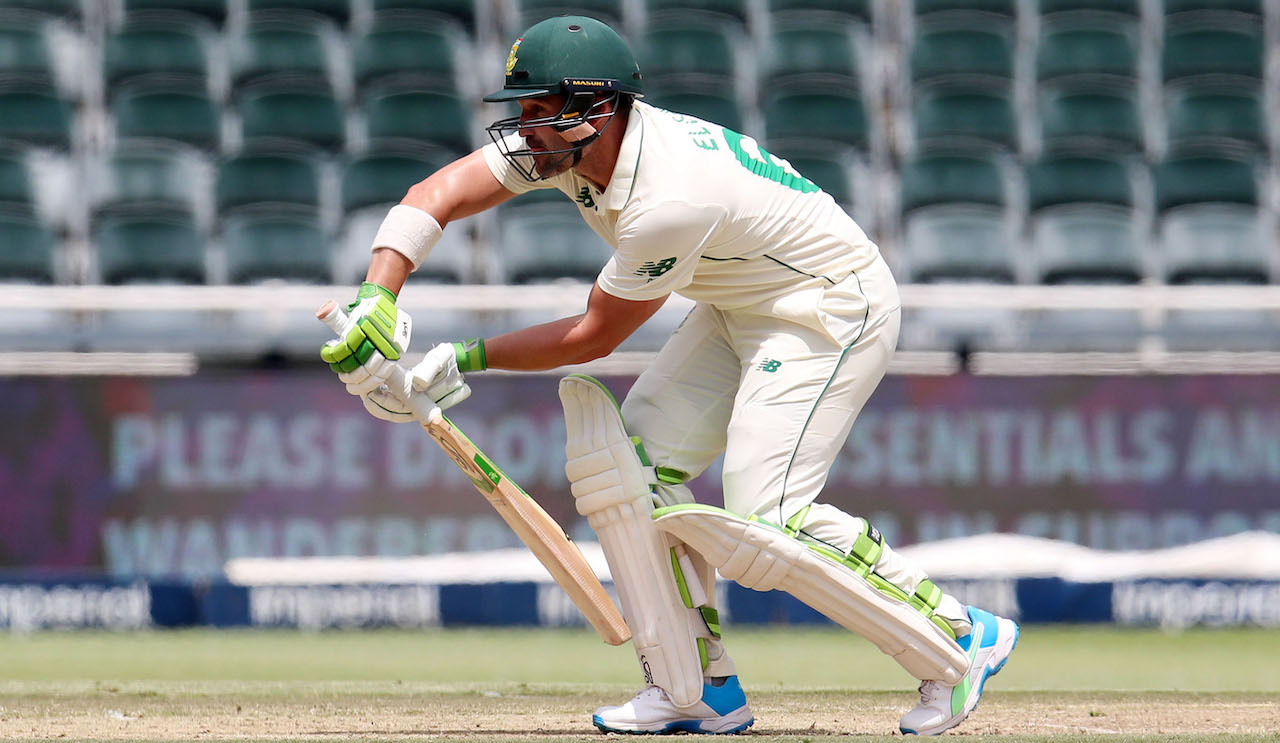
"Dean Elgar a great example of Test batting resilience"
By Marc Jacobson
Resilience is an art and the core ingredient in the makeup of a Test opening batsman, and one such batsman who strikes that ideal balance is Dean Elgar, according to the views of the renowned former opener and Proteas legend Gary Kirsten.
Resilience cannot be coached, it can only be adopted, and opening batsmen, in particular, are a “weird bunch” who play a vital role within a team in terms of the mental aspect of the game.
“Test opening batsmen are generally quite resilient people because there are so many unpredictables and variables when facing a new ball against fresh and fast bowlers,” Kirsten told Cricket Fanatics Magazine.
“Their performances may not be as consistent as a middle-order batsman so they need to be resilient around managing that, and Dean Elgar has been a great example of that.
“He’s managed to create longevity in his career, sometimes in really tough batting conditions.”
An opening Test batsman has to have the ability to ‘rough’ it out at the start of an innings, thereby building up esteem and setting the tone for the rest of the batting order, which is a foundational aspect that needs to be prioritised.
“Opening batsmen are a weird bunch, but they play a very important role mentally in a team,” Kirsten said.
“Generally, you are looking for guys who can tough it out a bit and who enjoy the challenge of a new ball, [while discovering] what that means to them.”
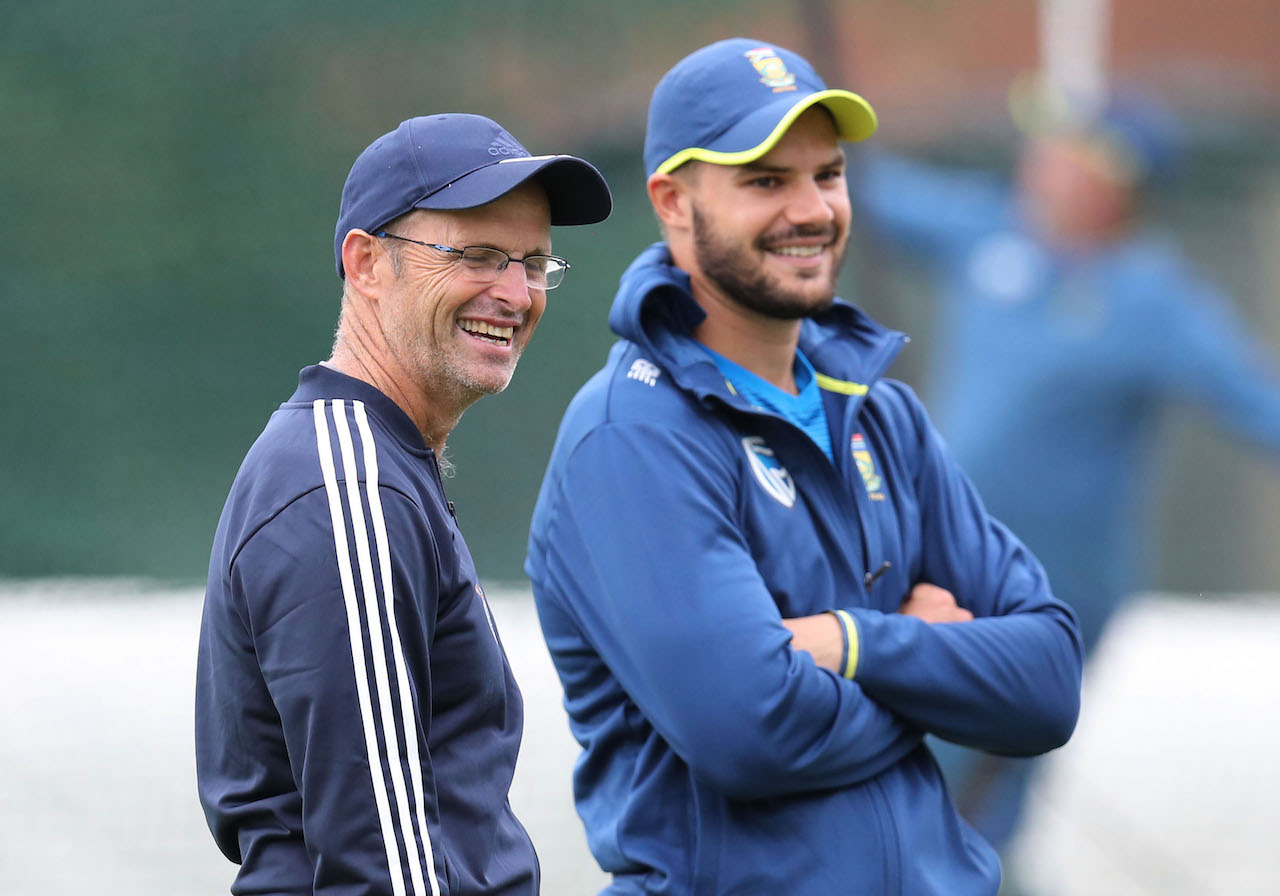
Test openers “differ a little bit” from ODI openers, Kirsten said, in that ODI batsmen usually play “one of two roles” within a team according to their overall objectives.
“One is to take the game forward as quickly as possible or to play an anchor innings and try to bang out as many hundreds as possible in their career.
“Sachin Tendulkar comes to mind of an [ideal] batsman in ODI cricket.”
In terms of Kirsten’s own ODI career, his duty was more of longevity, which was “fulfilling a role within the team”. He said there is “a lot more risk-taking nowadays” than when he played in the 50-over game some 20 years ago.
But with regards to Test cricket, Kirsten emphasised the importance of a Test opening partnership to grind out an innings and lay a foundation early on, labelling Elgar and Aiden Markram as a “great opening partnership fit."
“The opening partnership is vitally important in that we need to be really secure as a South African team of who those guys are who can run for a decent amount of time. It takes time to build up a partnership, but it’s so important in Test match cricket.
“I really enjoy the Elgar-Markram combination; I just think they fit exactly what is required. Markram has an incredible batting technique and Elgar has incredible resilience as a player.
“That is a great fit, so I think we’re good there,” he said reassuringly.
Apart from the openers, Kirsten felt that No 3 batsmen also face similar challenges in terms of building an innings and adopting the sort of mental strength required to break through a fresh bowling attack.
“I usually put 1, 2 and 3 together – I think 3 is a tough position to bat, but it does give you that little bit of breathing space, especially if you’ve had a long fielding day.
“Your No 3 batsman is technically your best player, because he might have to face a new ball and he needs to be very sound technically. He has to have the mindset of an opener, more so than a middle-order player.
“Having said that, the great No 3s of our time, such as Hashim Amla, who could fulfil many different roles, [as well as] Ricky Ponting and Rahul Dravid were great and successful No 3s. They all have an opening batsmen mindset.”
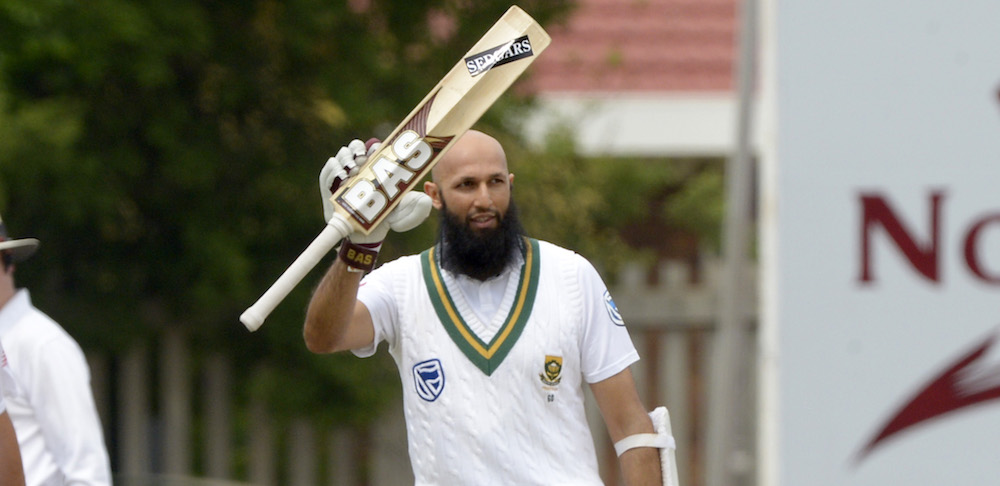
In terms of opening in different conditions, such as in the UK and India, the 53-year-old said the approach changes drastically.
“I think it differs greatly and that’s what I love about Test cricket – that you are confronted with different conditions and you need to manage yourself and your technique in different ways.”
He explained that when he played in India he remained “a bit more on the leg side of the ball” as there was less of a focus to getting into line.
Meanwhile, when he played on wickets that bounced more, such as the UK and SA, he would need to remain in line while “presenting the full face of the bat."
“I think opening the batting in those conditions [India] is a bit easier than doing it in SA or England, where there is a lot more ball movement early on.”
Kirsten, who played 101 Test matches for the Proteas, scoring 7289 runs at an average of 45.3, believed the development in SA in terms of red-ball cricket has been “getting good grounding."
“I think young players these days, through our elite cricket schools, are really getting good grounding and good fundamentals into cricket and that’s why we continue to produce great cricketers.
“I think our elite schools are doing a fantastic job in creating that, but I do believe we need to broaden that base and get more schools into producing top cricketers. That will be done through coaching, it’s as simple as that.
“The successes of the elite schools are really helping young kids develop and prepare, and I think an important thing is that we’re starting to see things like school rankings.”
He added that it was foremost to be mindful of the point that schoolboy cricket still serves as a “preparation ground” for the country’s top cricketers.
“We need to be careful; we have to allow them to develop and yes, you want to do it in competition, because the schools play a very important role in developing those players.”
Aside from his individual coaching, Kirsten runs three business ventures within the sport, namely an online coaching education platform, a cricket academy at Rondebosch Boys High, as well as a foundation that orchestrates cricket programmes in Khayelitsha.

Get More Clients With Cricket Fanatics Magazine
Cricket Fanatics Magazine has the visibility, infrastructure, expertise and toolset to automate your marketing and branding.
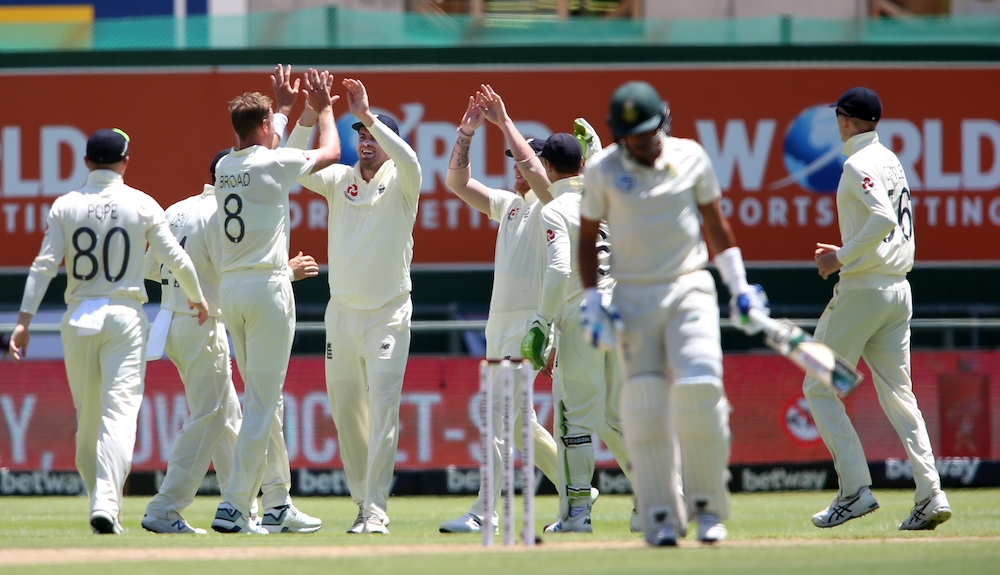
The Challenges of Red-Ball Cricket
By Khalid Mohidin
The following interviews with Zubayr Hamza, Ryan Rickelton and Sinethemba Qeshile will give you a wholistic understanding of red-ball cricket in South Africa.
We listened to their stories and what they have learnt on their journey so far.
RYAN RICKELTON
First up was Ryan Rickelton who has been an integral part of the Lions side, and also showed his class in the red-ball format for South Africa A.
Although his excellent performances in the white-ball arena saw his popularity grow in that format, he has regularly performed in the red-ball arena too and he discussed the development of his mental and physical side of the game.
SINETHEMBA QESHILE
Next was Sinethemba Qeshile who broke onto the 4-Day Cricket scene for the Warriors with a string of half-centuries. But his second season for the Warriors was not as great as his maiden season.
Although it's in the long format that he made his name as a junior, he made his debut in T20 cricket for South Africa. He also was selected in the SA A side, scoring a century in the long format. He discusses the lessons he learnt so far and particular the step up to 4-Day Cricket.
ZUBAYR HAMZA
Hamza had a tough stint in the national side, starting off solidly against Pakistan and India, but struggling against England in Tests.
His form before captaincy of the Cobras side was phenomenal and has been one of the top performers in the 4-Day arena for a couple of years in a row.
His progression and ability in red-ball cricket have been a massive part of his identification as a player, and he has made the step up through sheer determination and hard work.
Advertisement
Ezra Poole's Online Wicketkeeping Academy
Learn how to Master The Craft of Wicketkeeping Without Having to Hire a Full-Time Personal Coach.
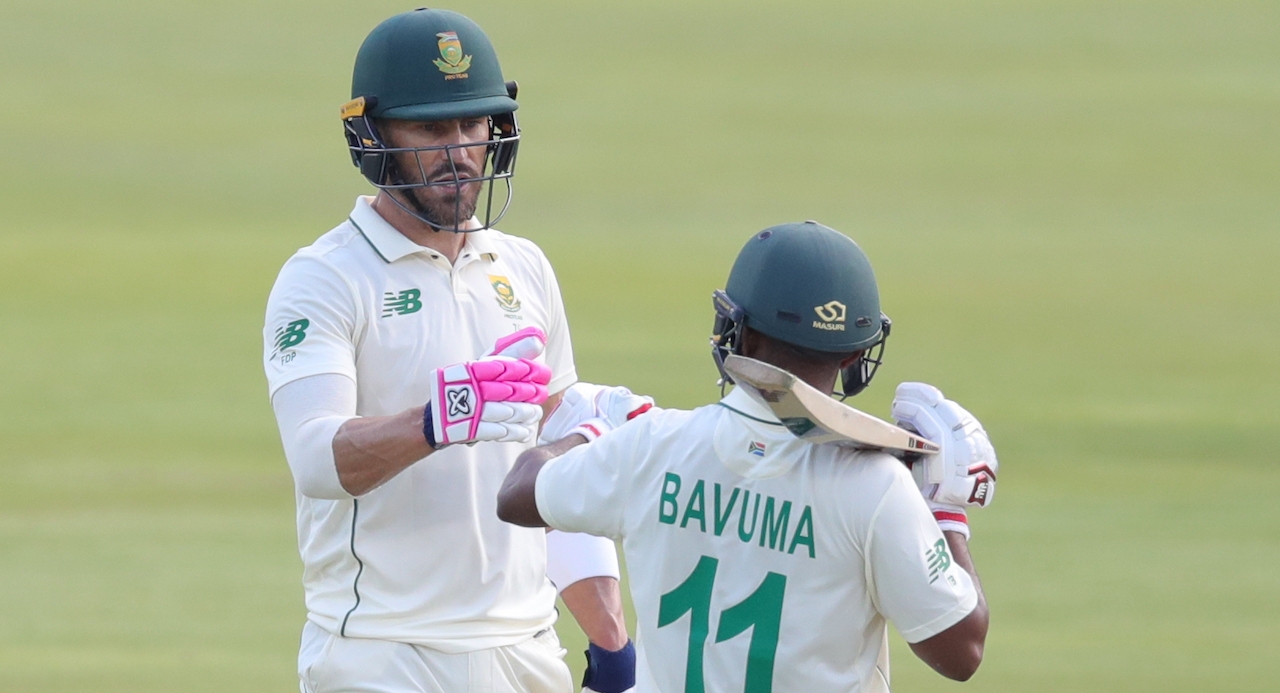
Preparing Test Cricketers
By Aditya Mehta
“Test cricket is bloody hard work, especially when you’ve got Sachin batting with what looks like a three-metre wide bat.”
-Michael Hussey
Cricket is a unique sport, given there are three separate formats played at the international level, with each format presenting its distinct set of challenges. Most professional cricketers across the world would agree that Test cricket is the ultimate examination of a player and although many players choose to focus on limited-overs cricket, a budding professional’s initial aspiration is to represent their countries in Test cricket.
The 13th issue of Cricket Fanatics Magazine is dedicated to the development of Test cricketers in light of the recently concluded series between South Africa and West Indies, and it compelled me to reflect on the various personality characteristics and cricketing skills that are integral to the development of a player.
This piece will examine four perspectives that are critical to the development of Test cricketers – role models, cricketing culture, identification and grooming of potential players, and the domestic infrastructure – and illustrate these themes using a variety of examples from the Indian subcontinent.
Role Models
The key to inspiring young children to pursue cricket professionally is to ensure that they have regular access to their sporting heroes. India winning the 1983 World Cup in England inspired the next generation of children to play cricket professionally. Sachin Tendulkar was one of them. Tendulkar’s generation grew up watching batsmen like Sunil Gavaskar and Gundappa Vishwanath. With a history of producing world-class batsmen, young Indians aspired to emulate their batting heroes at the international level.
Similarly, young Pakistani children were inspired to pursue fast bowling because of the heroics of Imran Khan, Wasim Akram, Waqar Younis, and Shoaib Akhtar. It explains why Pakistan has an enviable production line of fast bowlers that never seems run out.
In the South African context, Herschelle Gibbs, Jacques Kallis, Makhaya Ntini, Graeme Smith, AB de Villiers, Faf du Plessis, and Dale Steyn are among South Africa’s best cricketers over the last two decades. The next generation of South African children will hope to replicate their performances in a South African shirt. To develop Test players, it is important that children have the inspiration to chase their dreams.
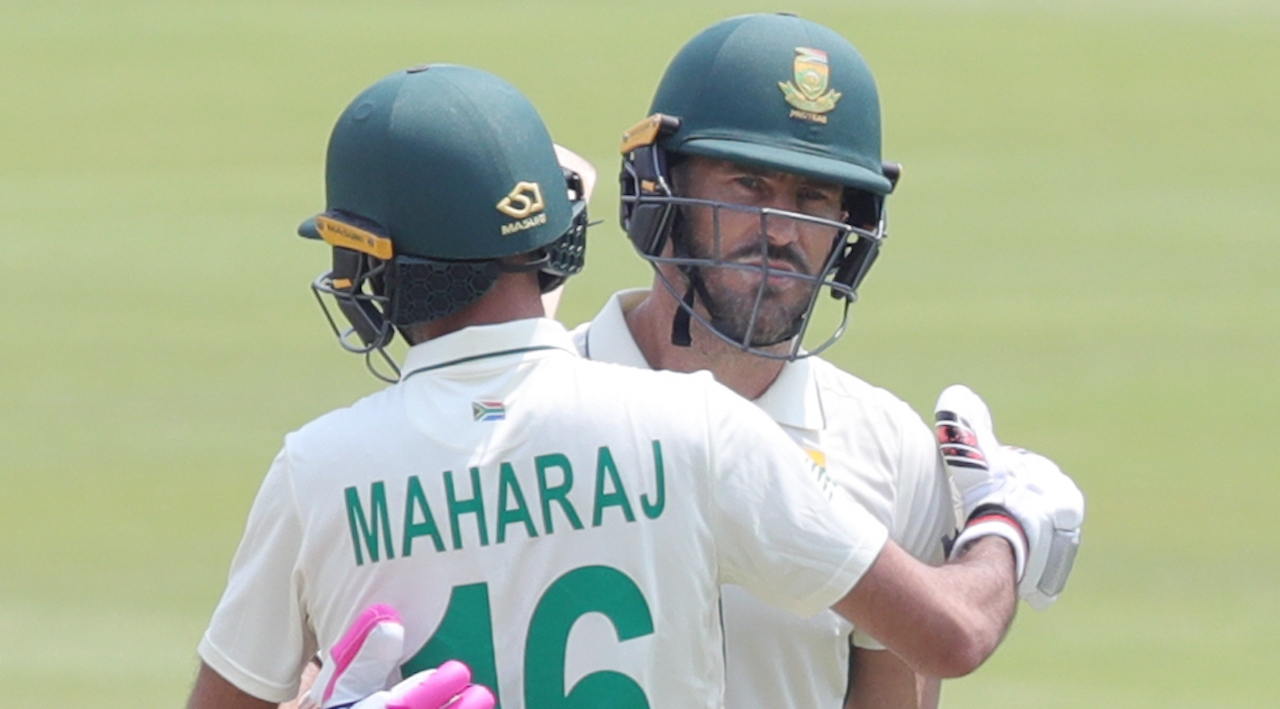
Cricketing Culture
At the state level, every team has a different culture. In Mumbai, for instance, batsmen are expected to be “stubborn” in their quest for success. Sunil Gavaskar once said, “The minimum price on a batsmen’s wicket is a hundred.”
It is hardly surprising that a third of all runs scored by India have been from batsmen who were groomed in the Mumbai cricket circuit. An innings exemplifying the quintessential Mumbai stubbornness is Sachin Tendulkar’s unbeaten 241 against Australia at the Sydney Cricket Ground in 2003-04. Throughout the series, Tendulkar was getting dismissed playing the expansive cover drive.
Before the Sydney Test, Tendulkar announced publicly that he would not play the cover drive in that Test match. He kept his word and did not play a cover drive through the course of the game. Tendulkar’s 241 helped India draw the Test and series.
Similarly, Faf du Plessis’ Test debut knock - an unbeaten 110 off 376 balls - against Australia at the Adelaide Oval resulted in an unexpected draw, which was the catalyst for a series victory, also reflected the stubbornness, dogged determination, and resilience that South African cricket values dearly.
On the flip side, however, Herschelle Gibbs’ free-flowing and aggressive brand of batting was at odds with South Africa’s conservative approach to cricket in the 1990s and early 2000s. In saying that, Gibbs still had a phenomenal Test career, scoring over 6000 runs in 90 Test matches, including 14 hundreds, at an average of 41.95.
A national team should be able to incorporate a variety of cricket cultures and allow players to showcase their skills in ways that they enjoy, while achieving the larger team objective. The golden generation of the Indian team succeeded because Sachin Tendulkar, Rahul Dravid, Virender Sehwag, Sourav Ganguly, and VVS Laxman were given the freedom to play to their strengths. For a South African unit to dominate world cricket, team management must be able to accept Faf du Plessis and Herschelle Gibbs in equal measure.
Identifying and Nurturing Potential Players
Former Indian captain and current Director of Cricket Operations at the National Cricket Academy, Rahul Dravid, once said, “I think we judge talent wrong.” Dravid continued, “We judge talent by people’s ability to strike a cricket ball – the sweetness, the timing of a cricket ball. That’s the only thing we see as talent. Things like determination, courage, discipline, temperament – these are also talents. When we judge talent, we have to look at the whole package.”
For South Africa to consistently produce international standard players, it is crucial for coaches and selectors to focus their efforts on nurturing cricketers. Players such as Jacques Kallis, Herschelle Gibbs, and AB de Villiers possessed, both, the ball striking ability as well as the temperament to perform at the highest level.
On the other hand, Graeme Smith and Faf du Plessis may have been lesser strikers of the ball, but were blessed with the grit and determination to find ways to succeed in international cricket.
Sometimes, the weight of domestic performances will result in a player’s selection to the national team. On other occasions, coaches and selectors must use their instincts to pick players on potential. Du Plessis’ first-class form before he made his debut was far from impressive, but the team management had faith in his temperament, which he duly repaid with a match-saving and series-winning performance.
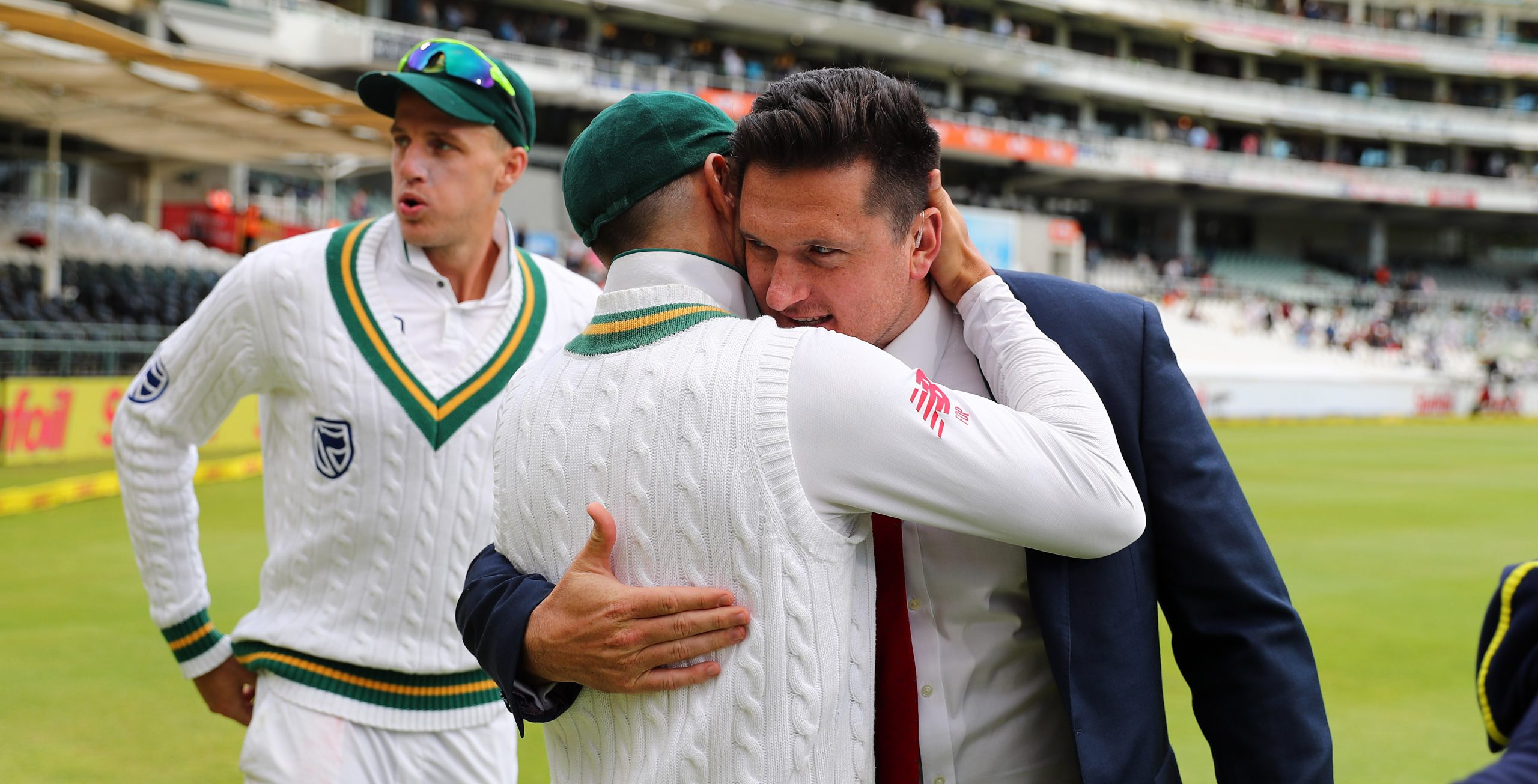
Infrastructure
The cricket landscape has changed significantly over the last decade, particularly due to the proliferation of T20 leagues across the world. Participation in these leagues has expedited the growth of players, especially in white-ball cricket, and there is an expectation for these players to perform well in Test cricket, too.
Since Rahul Dravid got involved with the National Cricket Academy, and designed the U-19 and India A programs, there has been a dramatic shift in the way players are prepared for international cricket. This model may have application for other cricketing boards as well.
In the Indian domestic structure, 38 teams play at the U-19 and U-16 levels. A junior selection committee, in partnership with Dravid’s team at the NCA, selects 150 players from these 38 teams. These 150 players are divided into six groups of 25, and sent to the Zonal Cricket Academy for a month-long camp. At this camp, intra-squad matches and fitness are the two main priorities. A wide variety of data, including runs, wickets, fielding statistics, and fitness levels are collected.
Additionally, detailed analyses on ball-striking ability, rotation of strike, speed in the field, and bowling consistency are prepared. Based on this information, the group of 150 is narrowed down to 50 players, who take part in two national month-long camps.
Ultimately, players are drafted into the A-team, and its structure equips them to achieve an understanding of international cricket. Between the beginning of 2017 and the end of 2019, India A played 24 unofficial Tests.
The most any other A team played was 14. India A’s 24 unofficial Tests was more than the number of official Tests New Zealand, Bangladesh, and Pakistan played.
The brains trust at the NCA aim to organize at least four – two home and two away – series for India A each year. The India A team has access to the same facilities, training and physio support, and analysis as the senior team. The coordination between India and India A’s management has ensured that the senior team always has backup options.
For instance, when India started to gravitate towards wrist spinners in white-ball cricket, India A also gave more opportunities to wrist spinners. When Ravindra Jadeja returned to the white-ball team, India A was preparing Axar Patel to play the same role in case Jadeja got injured. The objective was to have a replacement ready to perform on the international stage whenever the senior team required it.
Given the infrastructure available to young Indian cricketers, it is hardly surprising to see Prithvi Shaw make a century on Test debut, Shubman Gill score a match-winning 91 in his first Test series in Australia, and Mohammad Siraj take 13 wickets in his first three Test matches.
India’s domestic structure has produced overwhelmingly positive results over the last three years. While South Africa may have a smaller talent pool to choose from, adopting some of these lessons will help produce a pipeline of Proteas players that are ready to be successful international cricketers.
In conclusion, developing Test cricketers is a significant challenge, and the arguments presented above highlight the importance of nurturing an interest in Test cricket at a young age. Access to watching and playing cricket, followed by grooming potential players, and providing them with the infrastructure to succeed at the international level will go a long way in continuing South Africa’s rich cricket history.
*Credit to ESPN Cricinfo’s The Cricket Monthly for information on the India A structure.

Q&A: Claire Terblanche on Test Cricket
You used to do ballet and have a black belt in Judo. How did you know Cricket was your calling?
Well, ballet I did because my mom really wanted me to do it but it was a way I could get into Karate (Same hall as Ballet) but ultimately when I moved schools, I ended up being really good in Judo.
Wasn't really a choice to choose cricket, as it was more a goal to get my National colours and Black belt in Judo while still playing cricket and I achieved both of those goals.
My Sensei knew that I'd be in cricket one day, so essentially cricket has always been in my blood and nothing was going to stop me once I decided to completely follow my heart.
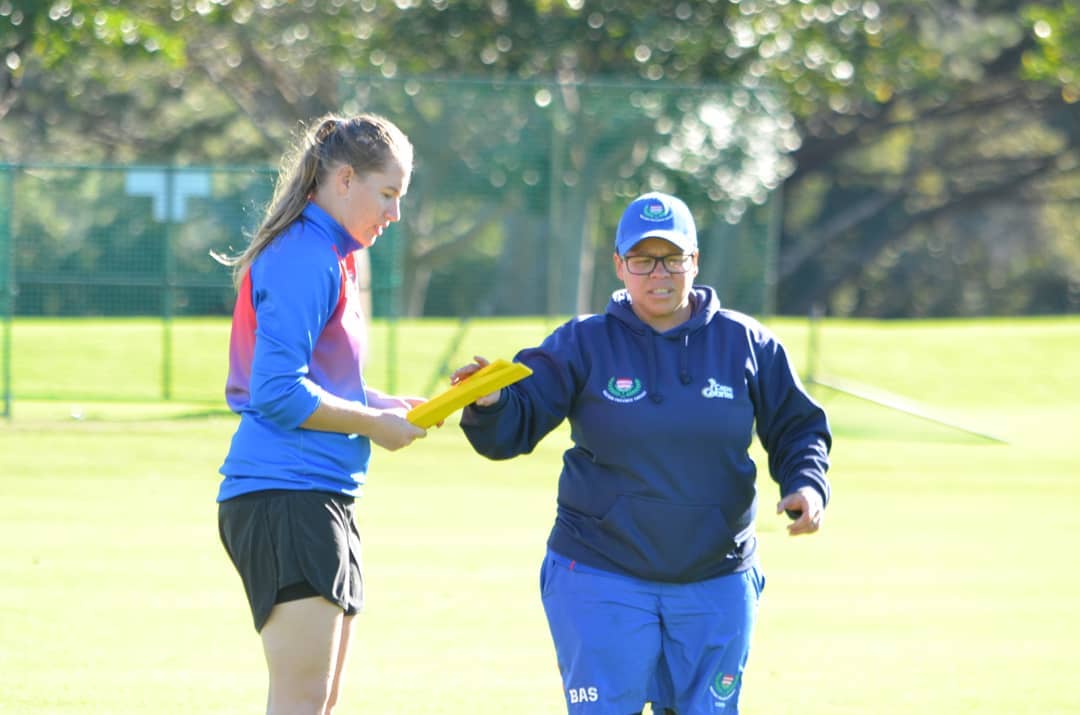
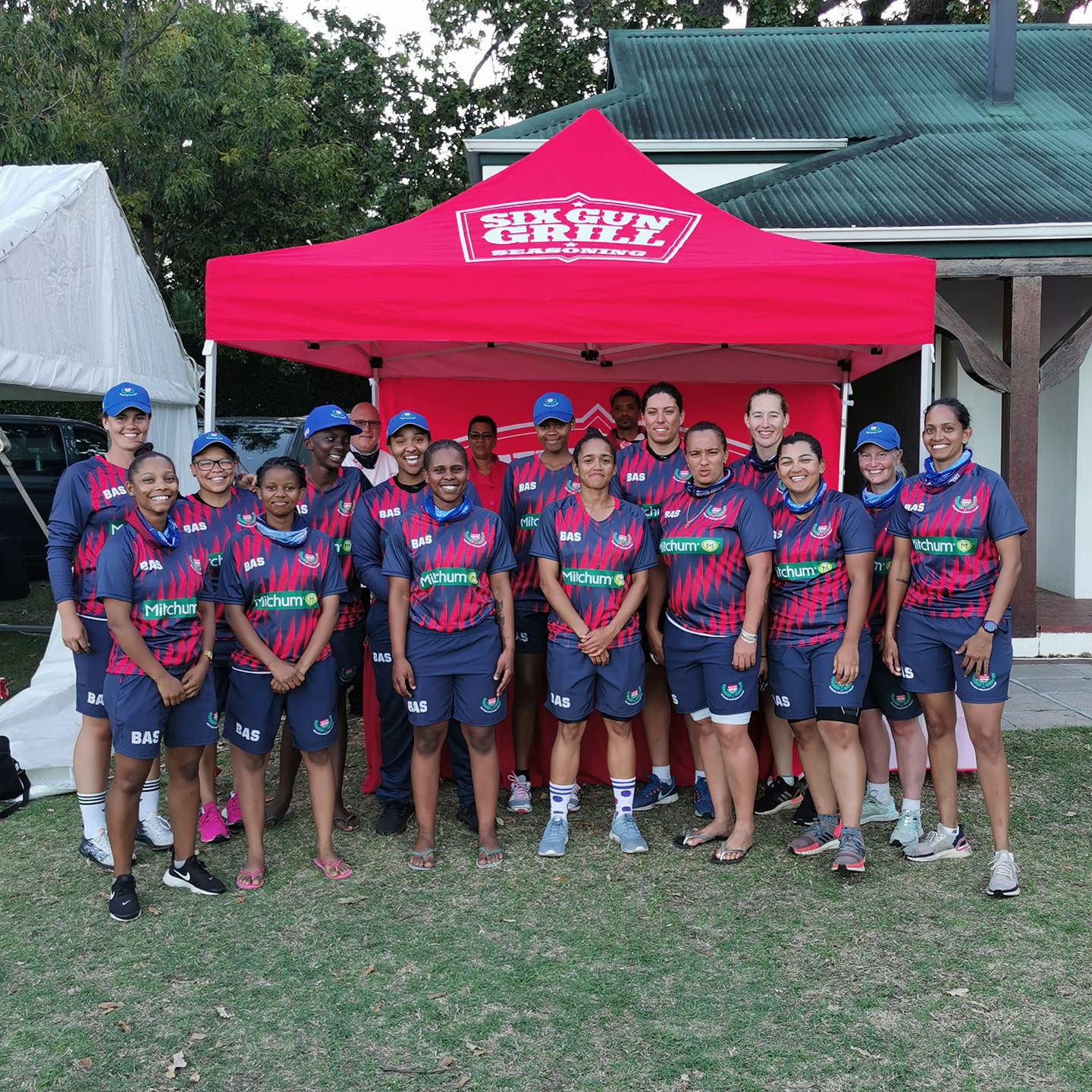
How did you come to be the Women’s and Girls Pipeline Head Coach?
The position became available 3 years ago, after the tragic passing of Coach Cobus Roodt who had done great things with the team over the years.
I applied, got shortlisted and had my interview and about a week later received my appointment phone call from Mr Nabeal Dien and so my journey with WP started in June 2018.
What is your motto as a coach?
Kindness... I believe that kindness can bring about growth, openness to learning and listening, increase trust between people and can help make players/coaches become better all round people - All through just being kind.
What are the top 5 songs in your playlist that hype you up?
Panic at the Disco - High Hopes
Panic at the Disco - Greatest Showman
Fall out Boy - Thanks for the Memories
Tiesto - The Business
Tiesto - Boom
Having played a Test in your International career, what is the kind of mental/physical preparation needed before a Test match? Is this different from the limited formats?
Yeah, I've played in one official Test but had to prepare for many... There wasn't much difference in preparing as we played Red Ball cricket at Senior Provincial level... I was an opening batter and the same characteristics are needed in a Test match as what was needed in a 50 over match - Patience, courage, tight fundamentals upfront with the new ball, knowing which line to play at and which to leave... and obviously taking responsibility to be the one to set the innings up and bat through.
Although nowadays, our ladies play a lot of White ball cricket and play a very attacking brand of cricket. There would need to be a change in how we would play the red ball game with regard to how a player would pace their innings and set themselves up because there is so much more time.
Also needing to face more red balls as it swings a lot more than the white ball, so slight adjustments in timing would be needed - Especially upfront with the new ball. I could go into so much more about this topic but let's leave it there


When did you decide to go into coaching?
I was still playing Senior Provincial and International cricket when I started with my coaching levels - Andre du Plessis saw something in me, more than just being able to play the game and he got me in to High Performance Coaching and mentored me along the way, still to this day he is around helping me and encouraging me.
8. What is the importance of the KFC Mini-Cricket festivals for involvement and development of young girls and boys getting into the game?
The KFC program is so very important as it doesn't only introduce the game to younger players but also gets coaches involved at junior school level, across the country.
The mass participation and fun of the KFC program has become so evident and exposes kids and adults alike to the beautiful game of cricket. Whilst learning how to be in a team and share in both wins and losses as a team - this way we teach growth and rules of the sport and in learn valuable life skills.
Were it not for cricket, which other career(s) would you have pursued?
So, I would've either gone in to teaching (Cos I'd still be able to coach) or Dietetics, where I'd still be working and dealing with people
Favourite Cricket player? Female & male
Jonty Rhodes - Male
Sophia Dunkley - Female (Stayed unbiased on this one 
Who motivates you most?
My Grandad was my biggest motivator, my biggest supporter - when he passed on, my whole family stepped in and I find the support of my family my greatest motivator.
Take us through a typical day as the Pipeline Head coach
This is my typical day in the off-season... During season gets a lot busier as can be expected
06h00: Wake up for gym
06h30 - 07h30: Gym
08h00 - Breakfast etc
09h00: Pick up player for a morning skills session
10h00 - 12h30: Group Session with HP players
13h00 - 15h00: Admin work completed, have lunch at my desk.
15h30 - 16h30: Light weight training before team gym session (Monday and Wednesdays)
17h00 - 19h00: WP Womens Team gym and SAQ sessions (Monday and Wednesday).
19h15 - Leave to head home.

Manchester United or Liverpool?
Glory Glory Man United!!!
What are your thoughts on the importance of the development of players at grassroots level?
It is extremely important, for me, it is the most important area of our pipeline. We need to develop more quality coaches that would like to stay developing players at grassroots and not have a need or want to move to higher ranks, right away.
In this way, we develop our players and our coaches with solid foundations, thereby creating a turnaround of both quality players and coaches as people move up to the next level over time. I know it's easier said than done but it'll be fantastic for the growth of our game as the development of fundamentals will have been tightly instilled and that's a great start.
What do you do to relax?
Netflix Series, Watch Cricket (Women's and Men's), Hike, Build Lego, go fishing when I can and play some golf if I have partners
As a coach in the domestic structure, what is your opinion on the importance of preparing players sufficiently for Test format in both the men’s and women’s game?
The men's structure already allows for the red ball game to be practiced and played. At National Weeks, the boys have time cricket, which later evolved into 3 day cricket in the Senior Mens space and 4 day in the Franchise space (That's how the Senior space used to work). Mens club cricket also used to have 2 day cricket at the amateur level.
Women do not play enough test matches and the systems have been adapted to allow for more white ball cricket to take place but only at Senior Women's level. Clubs and National weeks still get played with a red ball but no multi-day format.
If we have anything to go by the recent Test match - Eng vs India - Test cricket has definitely had an awakening in the women's space and the players want to play the format, to me it's still the purest form of the game and really tests players overall skillsets.
How important is the team dynamic?
Very important, a team without a positive dynamic that everyone agrees on and works towards can become a toxic space. It's about trust in each other that creates a safe dynamic and space - which goes back to my philosophy of kindness.
17. The CSA pipeline focuses on talent identification. What would you do in a situation where a player is 100% committed to training and development, is punctual and focused, works hard to achieve results, but lacks the sought-after talent?
Keep working with that player, keep being honest with the player about where they are along their game/path. We don't dictate opportunities but we can prepare the player as best we can, to be ready for when an opportunity arises. Talent isn't always what nudges players ahead, it's what you do with the talent that you have that can create the opportunity for you.
Offside Maidens
Daily Show | Let's talk about it
Video Playlist
The Podcast Live Show:
Exclusive Interviews
Crossword Puzzle
Meet the CFM Team!
ISSUE 12: Crossword Answers
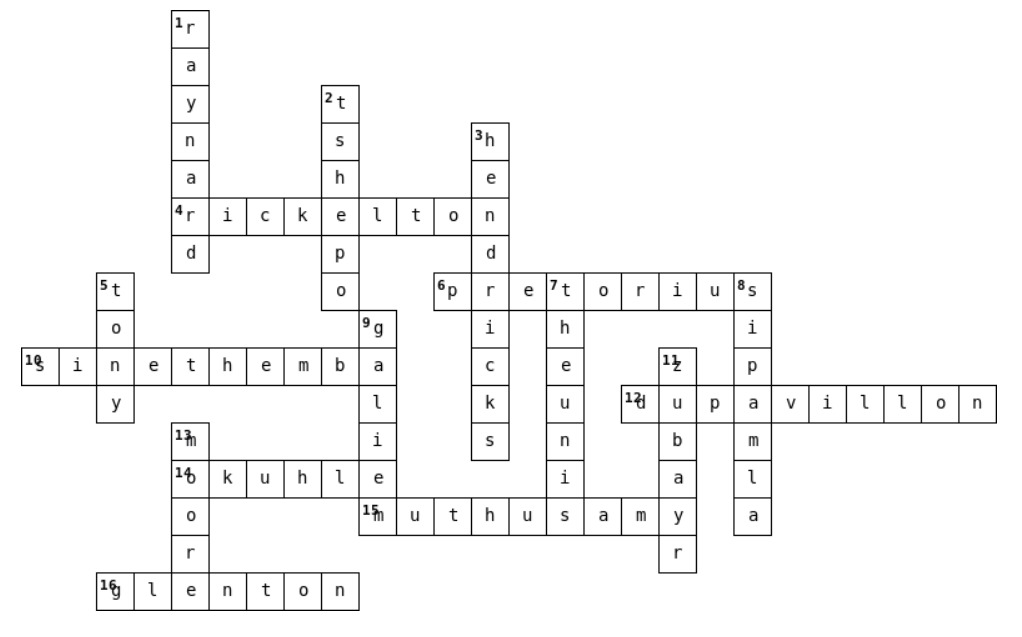

Magazine info
Editorial Director
Khalid Mohidin
IT and Technical Director
Faizel Mohidin
Contributors
Abhai Sawkar
Aditya Mehta
Emily Norris
Jessica October
Janine October
Khalid Mohidin
Licia Woods
Marc Jacobson
Ongama Gcwabe
Tara-Lee
Graphics
Khalid Mohidin (Cover and Graphics)
Mohammed Hoosain (CFM logo)
Images
BackpagePix
Supplied
Twitter
Facebook
Video Binge List:
On Lockdown Series
The Podcast Show
Legends with Ravi
Daily Show
